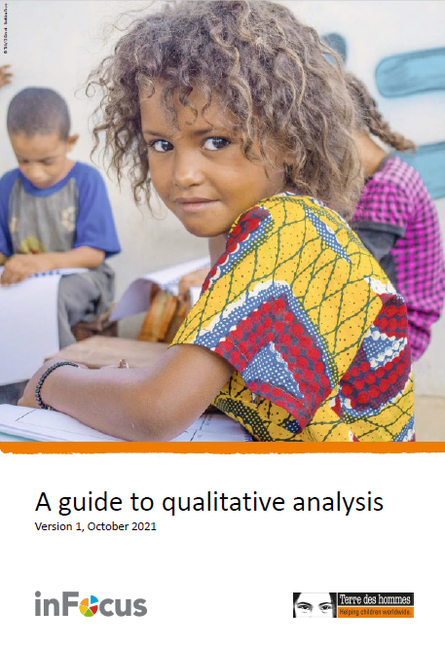
This guidance was produced as part of a broader project that aims at enhancing competencies of Terre des Hommes (Tdh) staff in qualitative data collection and analysis. It is enrooted in a vision that includes a commitment to improving the quality and use of data collected as part of project management for better learning, project steering and accountability towards the children and the communities.
The use of qualitative methods is increasingly re-encouraged in our sector: both for their relevance when it comes to exploring a new situation, or measuring change in relation to behavior, perception or psychosocial status, as well as for their potential in terms of quality and accountability (stakeholders’ empowerment, richness and complexity of information and learning work). Qualitative methods are particularly relevant to understand children’s views, opinions, experiences, as they are more adapted to children’s cognitive and emotional evolving capacities.They also allow for generating nuanced and rich data necessary for triangulation and robust analysis in combination with quantitative data.
But for busy humanitarian and development practitioners, often trained on the development of quantitative indicators, statistical analysis, and quantitative data visualization, rigorous qualitative data analysis can remain a challenge.How to make sense of hundreds of pages of transcript or video recording? How to mitigate bias and subjectivity? How to build a rationale and use qualitative data? We hope that this short guidancedeveloped in partnership with inFocus Consulting Ltd -which complements a set of training materials -will raise the confidence of staff in conducting qualitative analysis.